of Bobby, with her three-year-old daughter Halszka at her parent’s house
In March 1901, not long after moving into 14 Adamson Road, Robert and Stanisława Bevan had a second child, a son, Robert Alexander (known as Bobby).
Throughout the next decade the family would make annual trips to Poland staying at her parents’ house or at those of her sisters, Halina and Maria. However, these were difficult times in the country and in June 1905 there was a major uprising by Polish workers in Łódź against the Russian Empire. Known as the Łódź insurrection this was one of the largest disturbances in the Revolution in the Kingdom of Poland (1905–1907). In the summer of 1906, Stasia set off for Poland by herself, via Vlissingen and Berlin. In her fur muff she was carrying a Webley Mk IV revolver that she had been asked to bring out by Maria for her personal protection.
Meanwhile, in north London, the couple entertained frequently and Bobby recounted:
‘Both immediately before 1914 and later through the war, the Bevan house in Hampstead was a rallying-point not only for her closest associates but also for a number of other young artists. Tea-time on Sunday afternoons, often followed by a simple cold supper, usually saw quite a gathering which often included T.E. Hulme, Ashley Dukes, and the Gaudier-Brzeskas, as well as Sickert,
Walter Bayes, Lucien Pissarro, Manson, and Wyndham Lewis’.
Sophie Brzeska, who met the sculptor Henri Gaudier (1891-1915) in 1910 (he later added her surname to his own) was one of a number of fellow expatriates who gathered there, and she and Stanisława became close friends. de Karłowska bought several drawings and sculptures by Gaudier, and when he went to war in 1914 she sent him cigarettes and chocolates. In his final letter to her on 1st January 1915, Gaudier asked de Karłowska:
‘Since I might fall, would you be so kind as to ask for my news from Capt. Ménager … to send to my sister’.1
When he died later that year, de Karłowska broke the news to Sophie.
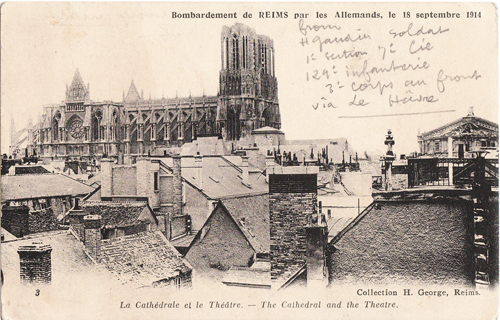
The Bevans were very hospitable and Robert was once referred to as the ‘Maecenas of the Camden Town Group’ though nothing could have been further from the truth. The allowance from his parents allowed him to buy his friends’ work, effectively subsidising their own careers in a modest way. The annual inheritance that she received from her family also helped considerably, but that stopped in 1914. The situation was relieved in 1918 when Bevan inherited some money on the death of his father. Neither of the artists would have been in a position to support a family on the few works that they were able to sell during their lifetimes.
Despite the difficulty of making ends meet their marriage was a happy one, and Bevan’s son recalled:
‘It was certainly a marriage for love, and she proved to be the best kind of wife he could have chosen. She had considerable beauty and charm, and, while she was far from being an intellectual, she had a natural and endearing vivacity …’.
Stanisława (always known as Stasia) made a number of paintings of Swiss Cottage near to where they were then living (see above). She and her husband frequently went on painting expeditions together. They made regular trips to Poland, and to Somerset where they spent three summers (1912, 1913, 1915) in the Blackdown Hills.
Throughout her married life and following her husband’s death Stasia continued producing works of art. She exhibited with the Women’s International Art Club, soon after 1900. Originally it required members ‘to have studied in Paris, to be women and do strong work’. The requirements for membership were later redefined to include ‘all women artists whose work attains the necessary standard of artistic merit’.
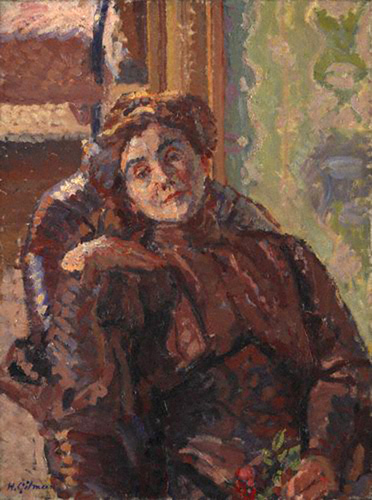
From 1908 she frequently exhibited alongside her husband at exhibitions organised by the Allied Artists’ Association, but while Bevan was recruited to join first the Fitzroy Street Group, and then the Camden Town Group, de Karłowska was not invited as she was ineligible for membership, being a woman. In spite of this, her paintings share similar characteristics with the groups, and are generally small in scale and informal in style and subject matter. She was friends with many of the members and inspired portraits by Harold Gilman and Spencer Gore.
Following her election to the London Group, in January 1914, she went on play a major part in its activities for the next four decades. Many years later, the secretary Eleanor Porter wrote to her when she had failed to send in any work in 1951:
‘This is the second London Group exhibition to which you have sent no pictures, and I, and many others judging from the enquiries which have been made, are wondering if you are abroad, if you have lost interest in the Group or if you are by any chance ill. As your address is at last in the catalogue it is possible to write to you and tell you that so many friends would like to see you and have news of you.’
From 1908 Stasia exhibited with the New English Art Club (NEAC) and contributed to two shows in 1915. She also entered paintings for mixed showings at such venues as Olympia (Daily Express Women’s Art Exhibition, July 1922) at the Cooling, Goupil, Grosvenor and Leicester galleries in addition to the Cumberland Market Group. In 1921 she joined her husband in a show of modern British painters at the Galerie Druet, in Paris.
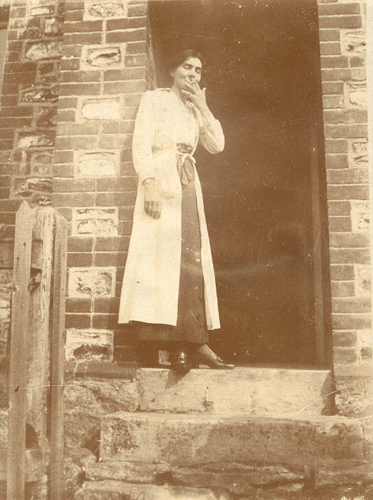
in Devon, that she and her husband rented for the summers of 1916-1919
Bevan painted for a number of months each year in the West Country, and his wife and children often joined him in the school holidays. He rented Lytchetts, near Bolham Water, from 1916-1919, and stayed at Gould’s Farm, Luppitt, from 1920. In 1923 he bought Marlpits Cottage on Luppitt Common.
In March 1925, shortly after she had been admitted to an asylum, Sophie Brzeska died. Two months later Bevan also fell ill and died soon after. Stasia would outlive her husband by another twenty-seven years.
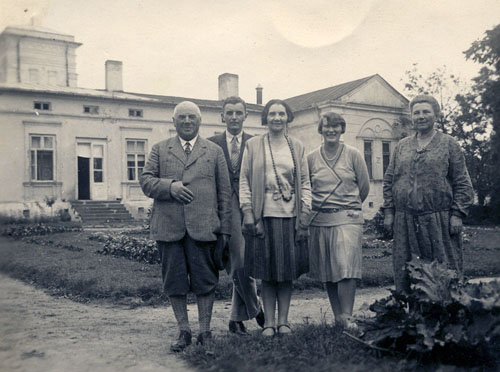
near Opatów, in SE Poland. She is shown in the centre with her son, Bobby, at the rear
She travelled to Poland until the late 1930s and would holiday with her daughter’s family at Pléneuf-Val André in Northern Brittany and at St Nicolas-du-Pélem, further south. Many of her London and Breton paintings can be seen in public collections.
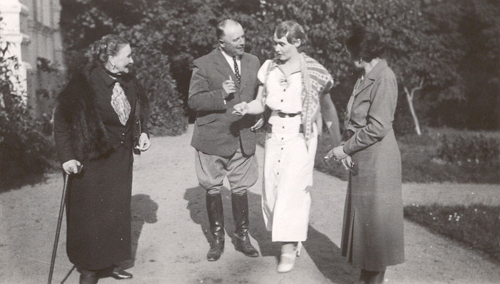
Maria and her husband Narcyz Krzeczunowicz. This was in 1936 on one of her last visits to Poland
Between 1930 and 1936 Stasia painted a series of pictures of London’s garden squares. These are usually deserted except for the occasional passer-by, and are characterised by their intense colours and clearly delineated objects and figures.
During this period, she continued to exhibit with the London Group, and in 1935 her first solo exhibition was held at the Adams Gallery. James Bolivar Manson (1879-1945) described her in the introduction to the catalogue:
‘She is an acute observer with a sympathetic vision which enables her to enter into the very spirit of the person, place or thing that she is painting’.
Stasia remained at Adamson Road after her husband’s death in 1925, letting the first two floors and withdrawing to the upper two floors where she retained the use of the studio. In 1936 she moved to a flat at 46 Russell Square, Bobby being resident at No. 41. In 1939 she moved to Torrington Square, but the bombing forced her to move to her daughter’s house at 15 Abbey Street, in Chester, where she spent the war years. She had a studio in the attic and carried on working.
Throughout the war she continued exhibiting at the London Group shows, at the Goupil Gallery, and from 1939 at the Women’s International Art Club. It was only in 1950 that she ceased to participate in London Group activities.
She remained in close contact with Camden Town Group friends, such as Sickert and Malcolm Drummond. She also saw a lot of John Nash and Charles Ginner, who both remained friends of the family until their deaths.
After the war she moved back to London and lived in a number of small flats until moving into a nursing home in 1952. She died on 9th December 1952. Her doctor, Dr Stuart Hensman, recorded that she was a:
‘victim of the frightful fog which carried off an unprecedented number of old people’.
Following a Requiem Mass at St Mary’s, Cadogan Street, she was buried alongside her husband, in the Bevan family plot in Cuckfield in West Sussex.
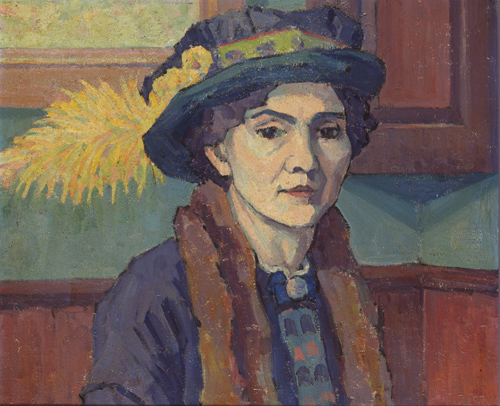
In the catalogue to the 1953 London Group exhibition Bobby submitted the following paragraph:
‘Among her happiest memories was the communal artistic life that centred around Fitzroy Street and the Camden Town and Cumberland Market Groups. She loved people and travel and bought pictures whenever she had a little money to spare, and enjoyed pressing hospitality on her friends. Exiled from London during the war she eagerly tried to take up her old life again on her return, though many old friends had died and she had lost touch with others. She continued to paint and exhibit for some years and even when increasing feebleness made this impossible, she kept a lively interest in the new painting shown in London. And she continued brave and gay till her peaceful death.’
Her memorial exhibition was held at the Adams Gallery in 1954, and in 1968 a joint Bevan – de Karłowska show was held at the Anglo-Polish Society, in London.
Many works were presented to public collections over the following twenty years.
In common with her husband, de Karłowska’s work passed through several phases during her life. Her early works were very colourful and combined a modernist style with elements of Polish folk art. In March 1910, Huntly Carter said of it:
‘what S. de Karłowska has to say she tells us lucidly in pure and harmonious colour.’
However, although one can see the influence of her husband occasionally she never flirted with Vorticism in the way that he was to do.
As an artist, Stanisława de Karłowska was content to follow her husband stylistically until his death; thereafter she adopted a simple style, following no particular painter.
Bolivar Manson, the then Director of the Tate Gallery, was of the view that:
‘The simplicity of her outlook is an essential part of the large sincerity of her mind; her art is cultivated in the sense that it is the ripe fruit of practice.’
Works by Stanisława de Karłowska in public collections
Aberdeen Art Gallery; Brighton Museum and Art Gallery; Cambridge, Fitzwilliam Museum; Cardiff, National Museum of Wales; Eastbourne, Towner Art Gallery; Glasgow, Kelvingrove Art Gallery; Huddersfield Library and Art Gallery; Hull, University Art Collection; Kettering, The Coach House; Leeds City Art Gallery; London, Museum of London; London, Tate Britain; Manchester City Art Galleries; Nottingham Castle Museum; Oxford, Ashmolean Museum; Plymouth City Museum and Art Gallery; Southampton City Art Gallery; Swindon Museum and Art Gallery; Wakefield City Art Gallery; Worthing Museum and Art Gallery; York City Art Gallery; South Africa: Port Elizabeth, Nelson Mandela Metropolitan Art Museum
NOTES
1 Throughout his friendship with the Bevans Henri pretended that he and Sophie were brother and sister.
See the gallery below for some examples of her later work. For an account of Stanisława’s early life and examples of her earlier work see Part 1
The best work on the subject is Frances Stenlake’s. Robert Bevan from Gauguin to Camden Town. Unicorn Press. 2008. I have also used information from the Tate Camden Town Group web pages.
References
Bevan, R.A. Robert Bevan 1865-1925. A memoir by his son. Studio Vista, London. 1965.
Cavanaugh, Jan. Out Looking In: Early Modern Polish Art 1890-1918. London. 2000
Chamot, Mary, Dennis Farr and Martin Butlin, The Modern British Paintings, Drawings and Sculpture. Oldbourne Press, London. 1964.
Foster, Alicia. Tate Women Artists. Tate Publishing, London. 2004.
Lilly, Marjorie. Sickert. The Painter and his Circle. Elek, London. 1971
Moren-Bialostocka ed., Slownik Artystow Polskich I Obcych w Polsce Dzialajacych-Malarze, Rzezbiarze, Graficy (Dictionary of Polish and Foreign Artists based in Poland-Painters, Sculptors and Printmakers); Volume III (letters H-Ki). Wroclaw. 1979, p.363
The New Age, Vol 6, No. 19, p. 452.
Sokol, Stanley S. The Artists of Poland: A Biographical Dictionary from the 14th Century to the Present Day. Jefferson, North Carolina and London. 2000
Tate Britain. The Camden Town Group in Context Stanisława de Karłowska
Tate. Typescript Notes. nd.
Yeates, John. NW1. The Camden Town Artists. A social history. Somerset, Heale Gallery. 2007.
- Sunday Afternoon. ca.1927 (Alfred East Art Gallery)
- Le Val-Andre. ca.1929
- The Long Barn. 1929
- Imperial Hotel, Russell Square. ca.1931 (Nottingham Castle Museum)
- Rooftops, Clifton Bristol. ca.1931 (Swindon Art Gallery)
- Le Lavoir, St Nicholas-du-Pelem. 1931-32 (Worthing Museum & Art Gallery)
- Pulteney Bridge, Bath. 1931-35 (Plymouth City Council)
- Pulteney Bridge, Bath
- The Tug Boat, Poole. 1933 (Kirklees Museum)
- Chapel Farm House
- A Corner of Russell Square. ca.1934 (Museum of London)
- At Woodnesborough, Kent. pre 1935 (Manchester City Art Galleries)
- The Quay at Binic, Brittany. 1935 (Ashmolean)
- Soho Square. ca.1936
- Snow in Russell Square. ca.1937 (Birmingham Museums Trust)
- Woburn Square. ca.1938 (Leeds Art Gallery)
- St James’s Square. 1939 (Aberdeen Art Gallery)
- Summer Cottage. ca.1940s
- The Eyot, Richmond. ca.1941 (Brighton Museum)
- Autumn Flowers. ca.1947
- Silvanus Bevan (copy of ca.1789 portrait attributed to Francis Wheatley)

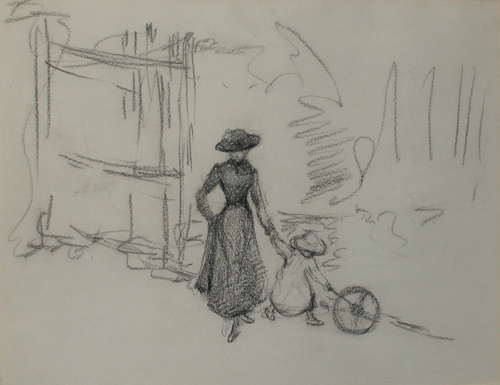
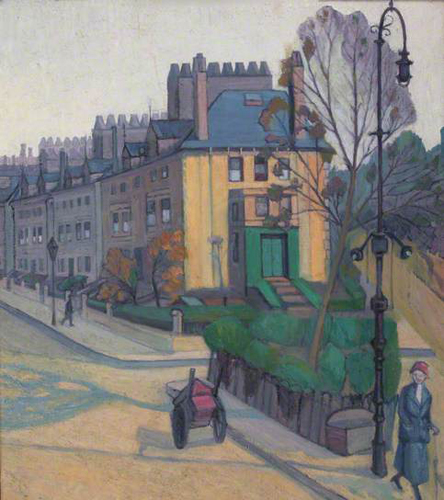
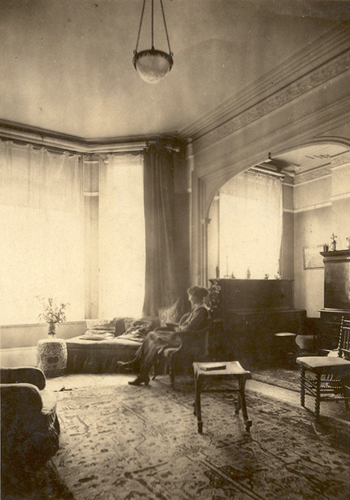
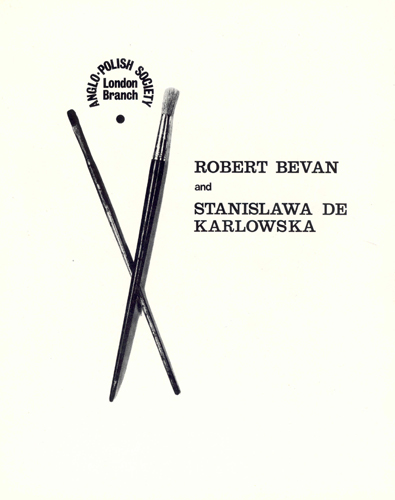
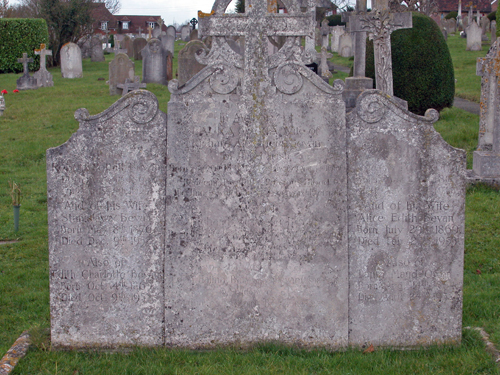
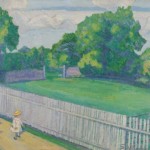
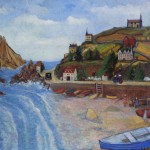
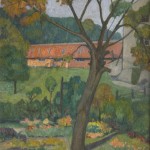
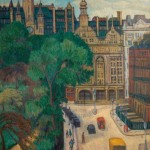
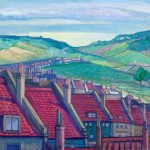
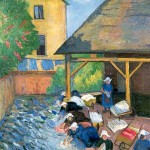
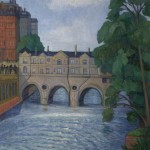
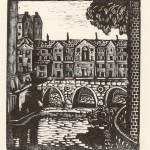
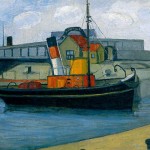
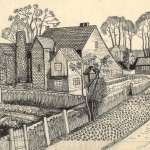
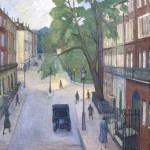
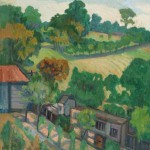
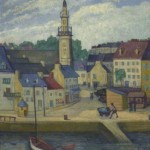
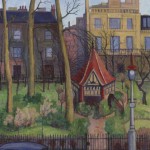
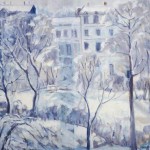
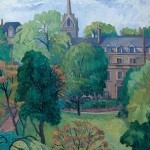
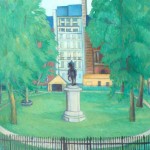
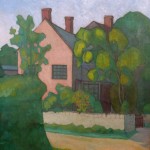
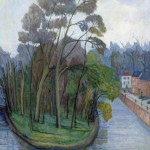
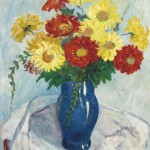
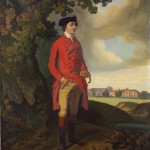










No comments yet. Be the first!